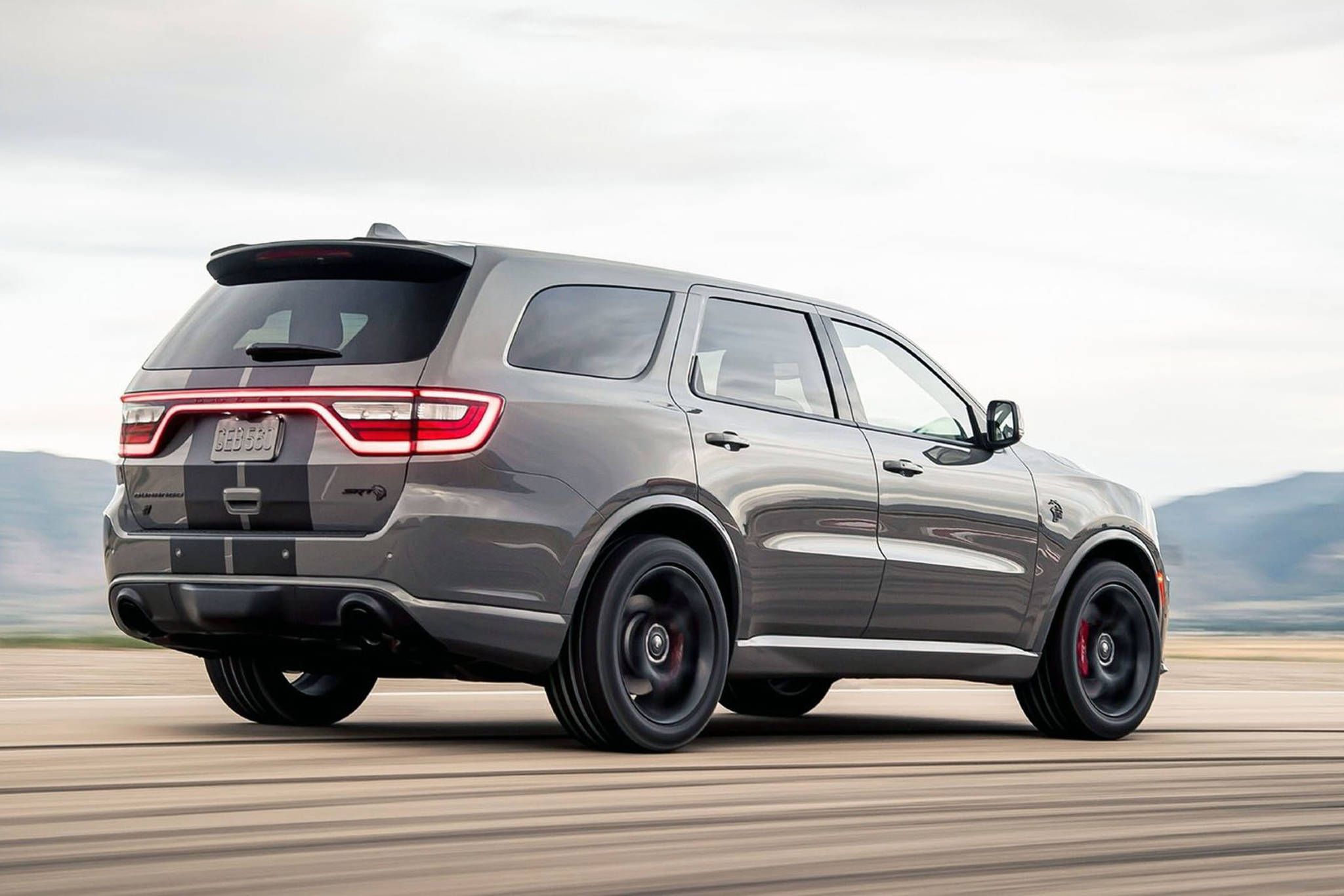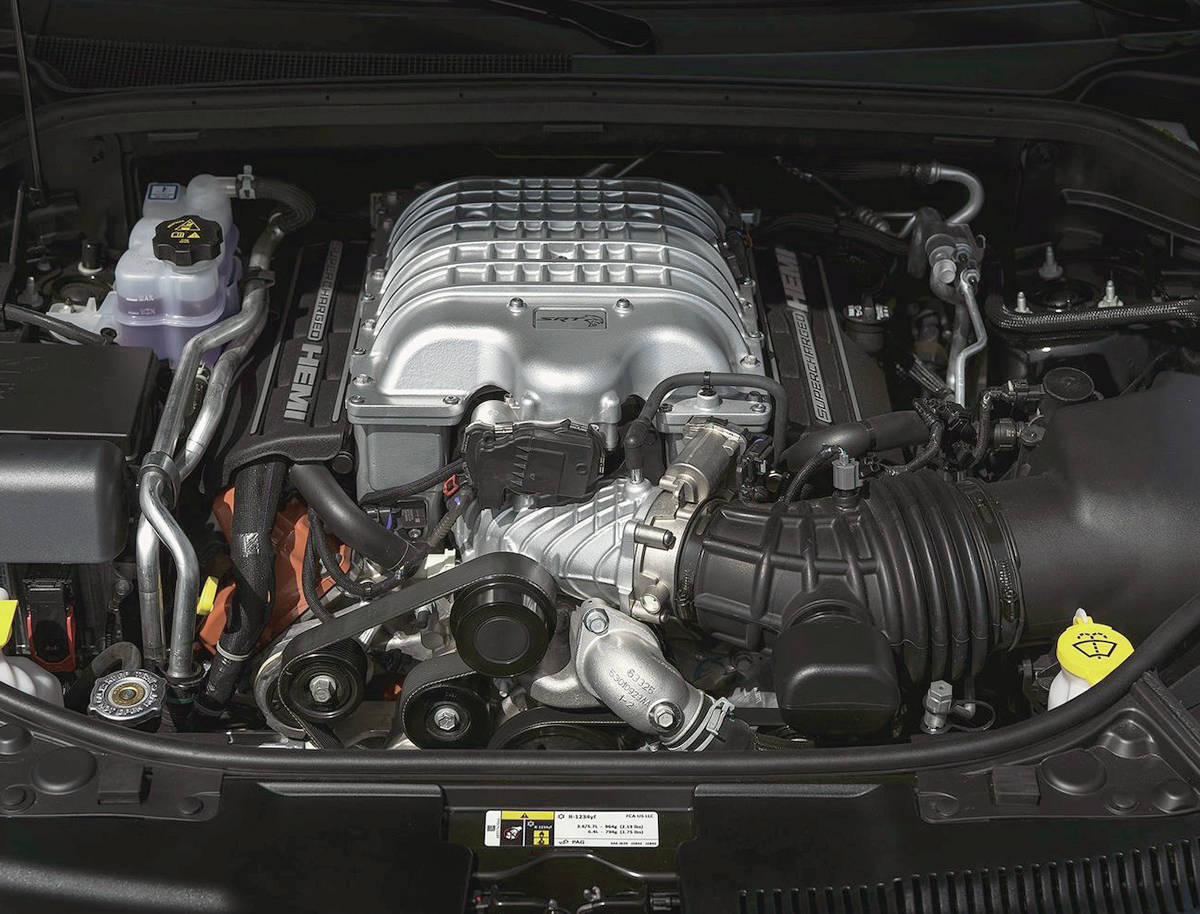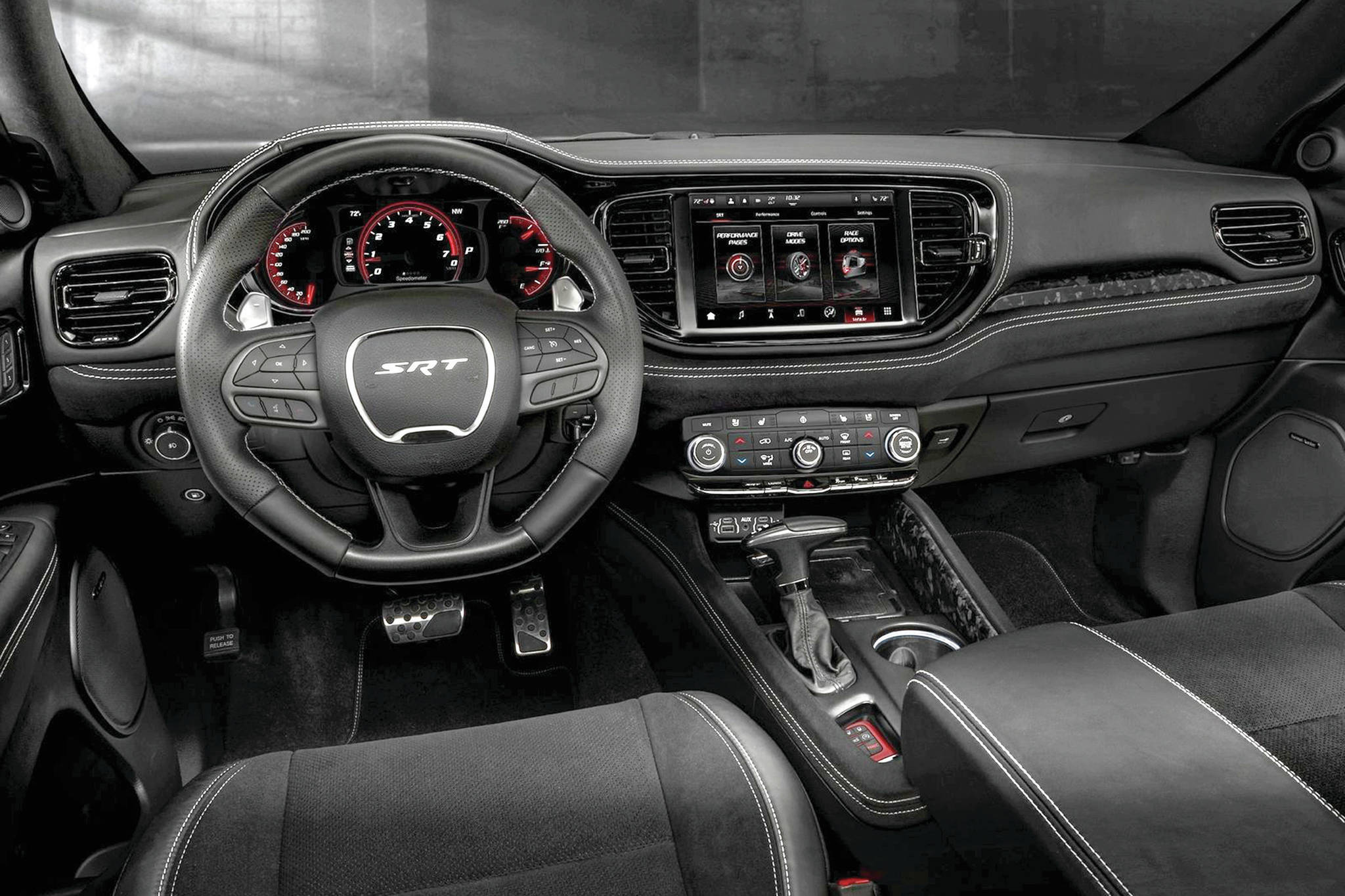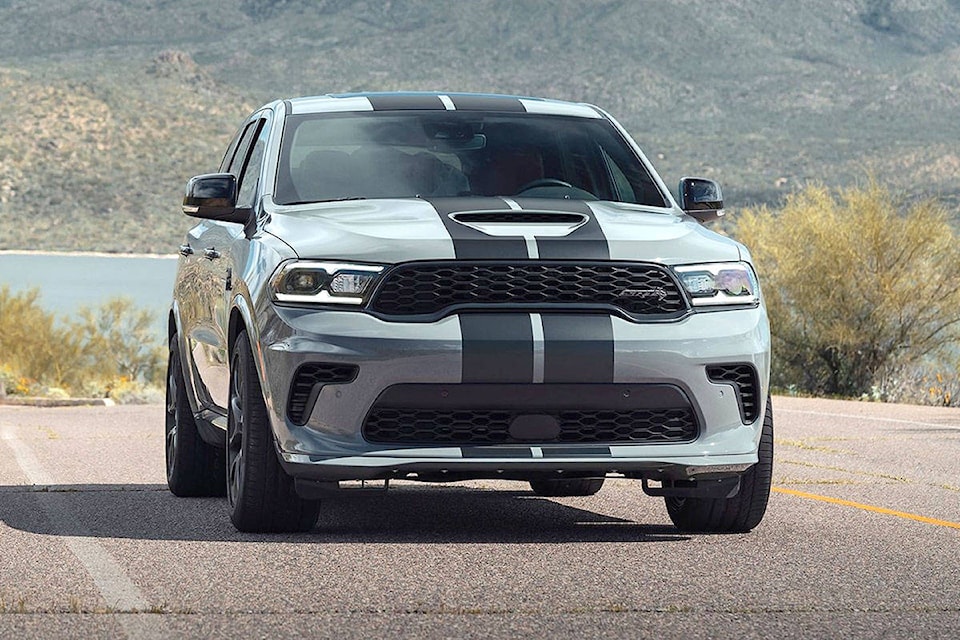With many trim levels, engines and seating capacities on offer, the 2021 Dodge Durango can be whatever buyers need, from frugal family hauler to lightning-quick track star.
Dodge was once a thriving member of the original Chrysler Corporation, but with the recent departures of the Grand Caravan minivan and compact Journey tall wagon, the brand is down to three models. (The Dodge Dart compact sedan departed in 2016 following a four-year run.)
For an industry that’s increasingly global, Dodge is a North American player, which could eventually leave it on the outside looking in. The recent merger between Fiat Chrysler Automobiles and PSA of France poses more questions regarding the future of Dodge, which, for cars, has only the aging two-door Challenger and the Charger sedan on offer.
And in a market that covets utility vehicles, Dodge has just one to sell: the Durango. Even more concerning, the Chrysler brand has none.

The current-generation Durango uses the Jeep Grand Cherokee platform and dates back to the 2011 model year, but since then has received regular updates both inside and out. The 2021 model has been given a more expressive nose and grille plus a rear spoiler and new 18- and optional 20-inch wheels. Despite the aging body panels, the Durango appears as current as the competition.
The well-appointed interior shows off a new instrument panel, an upgraded (as in much more responsive) Uconnect infotainment (8.4- and optional 10.1-touch-screens) and revised floor console and door trim. As before, there’s a standard third-row seat and the second-row bench can be replaced with dual high-back bucket seats. With either choice, there’s plenty of stretch-out room for second-row passengers. Folks seated in the third row definitely aren’t as fortunate, but this is typical for the category.
The base engine continues to be a 3.6-litre V-6 that produces 293 horsepower (295 horses with the dual-exhaust option) and 260 pound-feet of torque. Also returning is a 5.7-litre V-8 with 360 horsepower and 390 pound-feet. A 6.4-litre variant, exclusive to the Durango SRT 392, puts out 475 horsepower and 470 pound-feet.

For 2021, a limited number of Durango SRT Hellcat models are being produced as a one-year-only extravagance. Under the hood is a supercharged 6.2-litre V-8 that punches out 710 horsepower and 645 pound-feet of torque. It’s the one to get if you require 3,950 kilograms of towing capacity, or relish the thought of sprinting to 60 mph (96 km/h) from rest in 3.5 seconds. That’s pretty spry for 2,200-kilogram family hauler.
The V-6 models can tow a respectable 2,810 kilograms and function without undue strain or coarseness. No wonder it’s the standard workhorse for many Stellantis models, including the Chrysler Pacifica minivan, Ram pickup and Jeep Wrangler and Grand Cherokee. It is an excellent engine.
The standard-across-the-line eight-speed automatic transmission shifts smoothly and quickly.
V-6 fuel consumption is rated at 11.3 l/100km in combined city/highway driving, which compares to 14.1 l/100 km for the base V-8 and 17.4 l/100 km for the Hellcat. Keep in mind you’ll have to pony up $116,250 (including destination charges) for the Hellcat.
On the other hand, the base SXT V-6 AWD starts at a reasonable $49,400. It’s a fairly basic model that lacks active-safety technologies such as emergency braking or lane-departure warning.
The GT comes with unique trim, split-folding third-row seat, rear park assist, power driver’s seat and 20-inch wheels.
The R/T gets the 5.7-litre V-8 along with rear load-leveling suspension, power liftgate, heated front- and second-row seats and a premium audio system with navigation.
The Durango Citadel is V-6 only, but adds active-safety technology, fancier trim and perforated-leather seats with second-row captain’s chairs.
Both the SRT 392 and SRT Hellcat come with all-wheel-drive along with performance-tuned suspensions. The Hellcat also gets Brembo-brand brakes.
But unless you’re the power-hungry sort and want bragging rights, there’s really no need to take the V-8 route. The V-6 is plenty strong enough for most tasks and will save you money when signing on the dotted line and when stopping for fuel.
For many buyers, that’s performance — and value — at its best.

What you should know: 2021 Dodge Durango
Type: All-wheel-drive full-size utility vehicle
Engines (h.p.): 3.6-litre V-6, (293/295); 5.7-litre V8 (360); 6.4-litre V-8 (475); 6.2-litre V-8, supercharged (710)
Transmission: Eight-speed automatic
Market position: The Durango is unique in that it caters to a broad spectrum of buyers, from those with modest power needs to people seeking the thrills that come from controlling massive amounts of horsepower and torque.
Points: Mildly updated body still looks good after a decade in service. • Base V-6 has sufficient power, but there’s plenty more available when choosing one of the three V-8 engines. • It’s unusual to find no standard active-safety tech. • Uconnect touch-screen is fast and intuitive. • Hellcat version makes absolutely no sense, but that’s charm of it.
Driver assist: Blind-spot warning with cross-traffic backup alert (opt.); adaptive cruise control (opt.); front emergency braking (opt.); inattentive-driver alert (n.a..); lane-departure warning (opt.); pedestrian detection (n.a.)
L/100 km (city/hwy): 12.7/9.6 (V-6)
Base price (incl. destination): $49,400
BY COMPARISON
GMC Acadia AWD
- Base price: $43,300
- Seven-seat wagon offers three engine picks. Denali trim comes fully loaded.
Honda Pilot
- Base price: $46,900
- Well turned-out AWD model uses a 280-h.p, V-6. Eight-passenger seating is std.
Ford Explorer AWD
- Base price: $47,550
- Roomy utility vehicle can be had with twin-turbo 400-h.p. V-6. Hybrid model is opt.
– written by Malcom Gunn, Managing Partner at Wheelbase Media
If you’re interested in new or used vehicles, be sure to visit to find your dream car today! Like us on and follow us on



